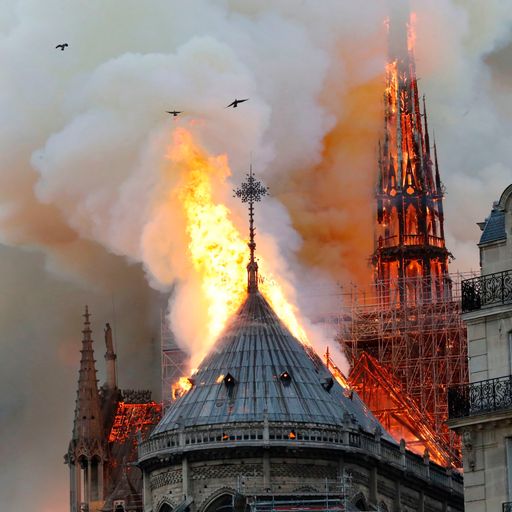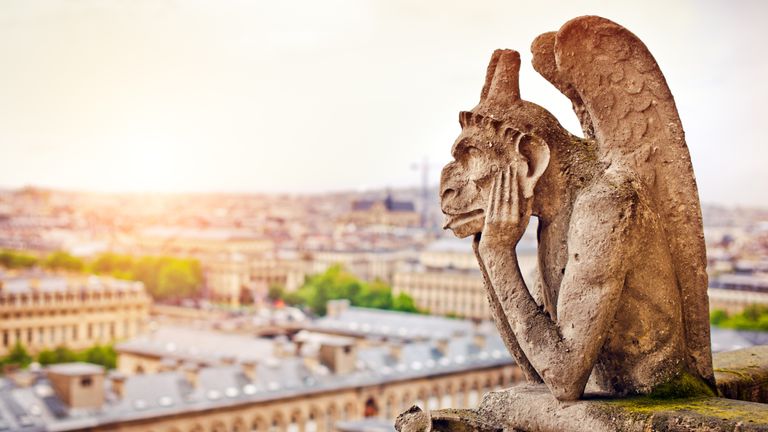Notre-Dame: One of the world's most popular attractions
Around 12million visitors worldwide flock to the iconic cathedral in the French capital each year.
Tuesday 16 April 2019 07:54, UK
Notre-Dame de Paris - or "Our Lady of Paris" - is a Gothic Roman Catholic cathedral and the largest in the French capital.
- Located on the Ile de la Cite in the centre of Paris on the River Seine, the cathedral was home to priceless works of art
- The cathedral, which dates back to the 12th century, features in Victor Hugo's classic 1831 novel The Hunchback of Notre-Dame
- Quasimodo, the main character, is feared by Parisians because of his deformity, but finds sanctuary in the cathedral and is employed as a bell-ringer. Quasimodo has been portrayed by Hollywood actors including Charles Laughton and also in an animated Disney adaptation
- The Gothic building is among the most famous from the Middle Ages and was built on the ruins of two earlier churches
- The first stone of the Notre-Dame de Paris cathedral was laid in 1163 in the reign of Louis VII, as the medieval city of Paris was growing in population and importance, both as a political and economic centre of the kingdom of France
- Construction would continue for much of the next century, with major restoration and additions made in the 17th and 18th century. The stonework and stained glass of the edifice recreate images and lessons from the Bible
- Dominating the structure are its two 13th century bell towers. The so-called "bourdon", the largest bell, goes by the name of "Emmanuel"
- The 387 steps up to the towers take visitors past the gallery of chimeras, mythical creatures typically composed of more than one animal. The most famous of these, the "Stryge" gargoyle sits atop the cathedral watching Paris with its head resting in its hands
- An estimated 12million people globally flock to Notre-Dame, making it one of the world's most popular tourist attractions
- Notre-Dame was in the midst of renovations and some sections were under scaffolding and bronze statues were removed last week for works
- French media quoted the Paris fire brigade saying the blaze is "potentially linked" to a £5.1m renovation project on the church's spire and its 250 tons of lead.
Sky's Alistair Bruce says: "The cathedral would have been built by medieval craftsmen using wood that had been felled from nearby and would have been drying for centuries and over that would have been the lead that kept the rain out.
"Of course once the wood was alight and the led was melting, you can see the great glow coming from the heart of the nave of this enormously special cathedral and will burn for some time.
"What is interesting is that they kept a reservoir of water deliberately so that were there to be a fire, it could quickly be deployed to try and counter the effect of that destruction but we don't know to what extent that may have been possible."





